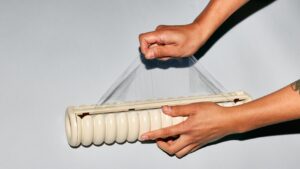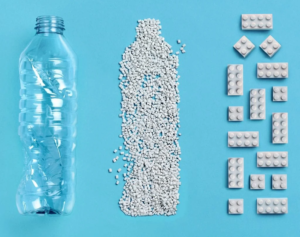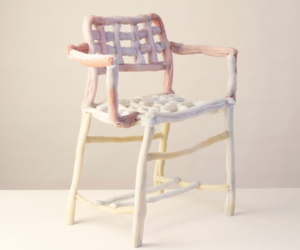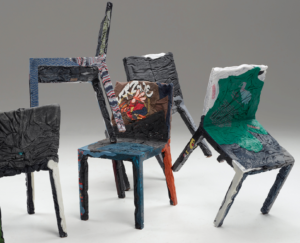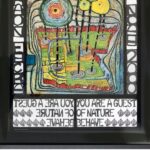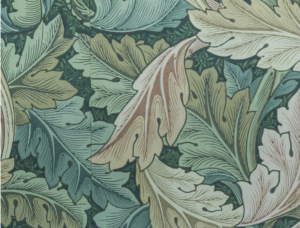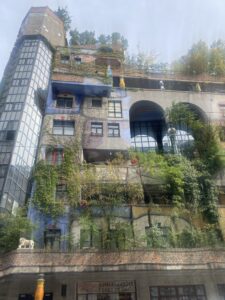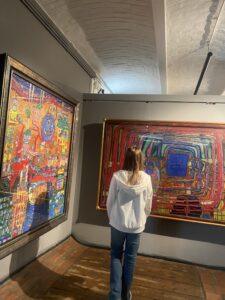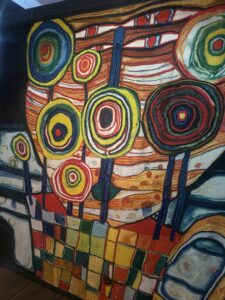week 11- environmental futures: reflecting on the course

“If design is ecologically responsive, then it is also revolutionary.” (Papanek, 1977:200)
For me, this quote summarises my learning research and thoughts perfectly. As emphasized consistently in my blog posts, I firmly believe that as the next generation of designers, it is extremely important to proactively embrace a design approach that works with our environment, not against it.
I have found this course to be both enlightening and eye-opening. Though I was already aware of environmental issues and driven by a sense of responsibility in my own practice, I did not anticipate the depth of insights and paradigm shifts that awaited me.
The key idea I will take away from this course is the interconnectedness between the environment and design. It has become a key focus of mine to create designs which are not only visually appealing but consider our environment within every stage of the making process. This realization was heavily influenced by the ecological design philosophy of Van Der Ryn and Cowan, which emphasises the interconnectedness of all living entities. The concept of interconnectedness has fundamentally altered my perspective, serving as a constant reminder that design goes beyond aesthetics and function.
The concept of “cradle-to-cradle” design, put forward by McDonough and Braungart, has also hugely impacted my perspective on sustainable design. The cradle-to-cradle framework challenges the traditional model of “cradle-to-grave” by envisioning materials that can be continually recycled or biodegraded. This reading imparticular made me reflect on my design decisions and consider the full lifecycle implications of my designs. I feel morally obliged to make a conscious effort to integrate sustainability into every project.
Though theorists have definitely helped assist my learning, I have been sure to remind myself that they are largely philosophical, and have used my blogs as a means of being critical of their idealist nature. However, I do think it is important that as designers we are open-minded and are able to imagine all sorts of possible futures, as these discussions are the key to starting change.
Changes I have started to make…
As a result of my reflection over the past 10 weeks, I have found myself increasingly drawn to the philosophy of slow design. The principles that underpin this approach align seamlessly with my design practice of textiles. In a world where fast fashion is such a huge issue, I am trying to design with intention, selecting materials that are not only aesthetically pleasing but also environmentally responsible.
My own research led me to watch the RiverBlue documentary, which explores the environmental impact of the fashion industry on rivers around the world. The film highlights the pollution caused by the production of clothing, particularly the extensive use of toxic chemicals and dyes, which often end up contaminating water sources. I found the documentary to be an extremely eye-opening exploration of the dark side of the fashion industry. It has urged me to be more conscious of my clothing choices and consider ways that I can contribute to advocating for sustainable and environmentally friendly practices within textiles and fashion.


Of the back of this, I have begun exploring organic fibres, and sustainable dyeing techniques that prioritize longevity over disposability.
Summarising my findings surrounding natural dyes:
Natural dyes are a great choice for conscious fashion as they advocate that the process of design is slow and intentional. It can also be a zero-waste alternative, especially when food waste is used for dyeing purposes. While there are complexities around sustainably upscaling natural dyes, they are still a great option for small, conscious fashion brands. I think that upscaling these processes for large-scale companies will require a lot of transparency and compromise. I don’t think either natural or synthetic dyes are entirely right or wrong, but could be combined to work towards a more environmentally conscious design outlook.
Natural dye development so far…
As I continue my journey in the textile design field, I believe that the principles of slow design will remain at the core of my practice. Following this course, I feel a renewed sense of responsibility to create products and materials that not only minimize harm but actively contribute to the regeneration of our environment. I have begun to understand that environmental design is an evolving discipline that demands continuous learning and adaptation. As a young designer, I believe that I have a commitment to staying informed and being responsive to an evolving industry with constant challenges. I am driven by the prospect of transitioning into a professional role within the textiles industry, where I can contribute to the development of new materials that challenge the conventions of traditional design, through thoughtful, intentional, and ecologically conscious practices.
References:
Braungart, M. and Mcdonough, W. (2009). Cradle to cradle: remaking the way we make things. London: Vintage.
Cowan, S. and Van der Ryn, S. (1996) Ecological design. Washington D.C: Island Press.
Papanek, V. (1977). Design for the Real World: Human Ecology and Social Change. New York: Pantheon.
River Blue. (2017). [DVD]. Directed by: David McIlvride and Roger Williams. Canada: Paddle Productions.









 https://www.greenrooforganisation.org/green-roofs/
https://www.greenrooforganisation.org/green-roofs/
